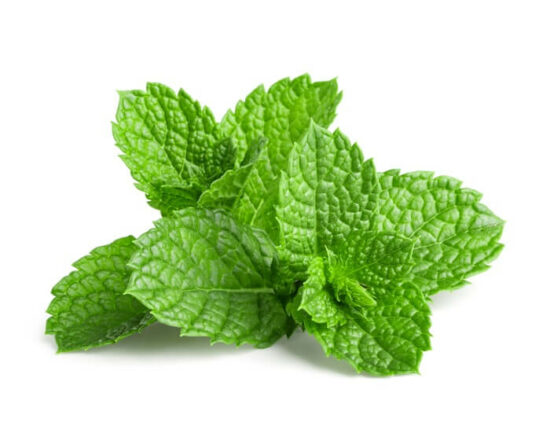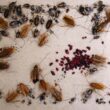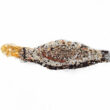There are a number of plants that repel wasps quite effectively, all you have to do is plant them! No matter what yard setup is or what climate you live in, these plants will deter and keep wasps away (so you don’t have to).
Let’s check out the list.
1. Spearmint
Spearmint is a popular plant that repels wasps that you’ll often see growing in herb gardeners. The leaves are vibrant, green, and aromatic.
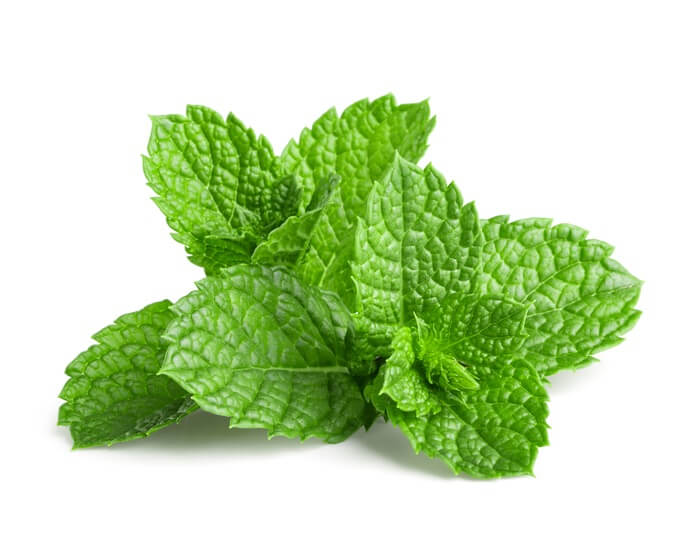
The best thing about spearmint is the menthol it produces. The minty vapors are rather strong, which is why wasps hate them. So, they tend to avoid it as much as possible.
While not as potent as other forms of mint, spearmint is still compelling enough to keep those pests away. Best of all, it serves a practical function! Spearmint is a common ingredient in drinks, desserts, and more.
Place some pots of spearmint around your backyard for proper coverage. It’s best to cultivate these plants in containers, as they have a reputation for being invasive.
2. Lemongrass
Lemongrass is another natural repellent. At first glance, lemongrass looks like nothing but an ornamental plant. The thick grass blades have a rough texture and can grow up to six feet tall with the proper care.
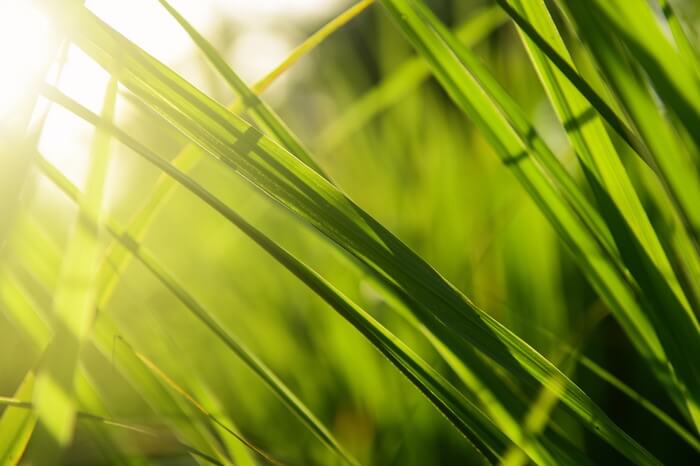
All that said, lemongrass holds a secret that you can only detect once you get close. It produces citronella oil! Like the aromatic joy of minty spearmint, citronella oil is something that wasps detest.
Wasps have a strong sense of smell, and potent fragrances like citronella are too overwhelming for these flying insects to handle. That means you can use these wasp repellent plants to your advantage! Lemongrass will add some organic beauty to your yard while filling it with a pleasant smell that keeps wasps out.
Plus, you can use it for cooking!
3. Peppermint
Many people regard peppermint as the “holy grail” of all-natural wasp repellent. Its effects are similar to that of spearmint and other fragrant plants that deter wasps.
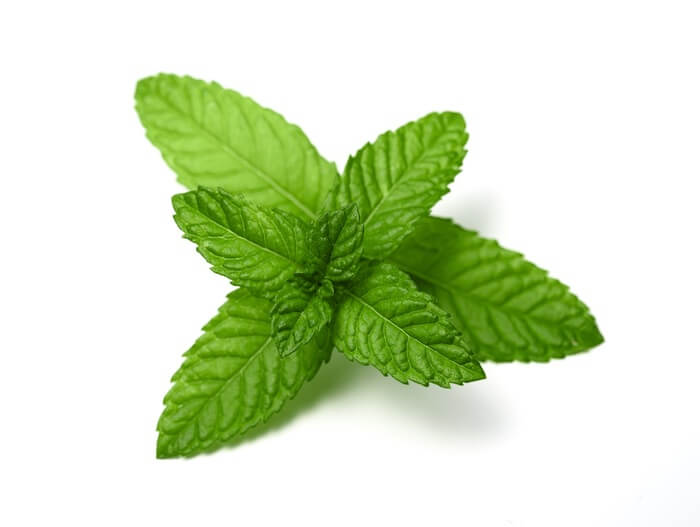
Peppermint produces a minty smell that wasps hate. The interesting thing about this cultivar, however, is its overall potency. This plant has a significantly higher concentration of menthol than other options.
For some perspective, spearmint is about one percent menthol. Peppermint contains 40 percent!
A few peppermint plants can work wonders to make your property wasp-free. Take a stroll through your local big-box store, and you’ll likely see many natural pest control products that use peppermint oil as a base. Having the plant nearby is just as effective as pricey products!
4. Basil
Basil is a very effective plant that repels wasps. While you might be used to seeing this herb on your favorite Italian dish, its leaves can also repel wasps, hornets, and many other flying insects.
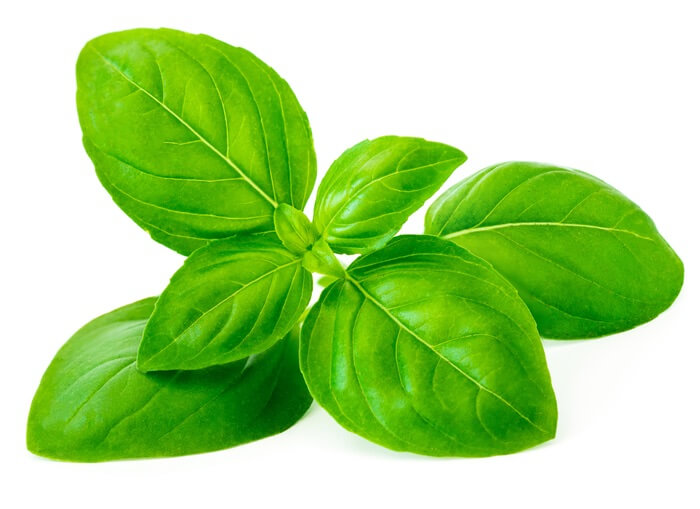
It all comes down to its essential oils. Those oils come out when the leaves get crushed or damaged. That’s how we enjoy the flavor of this herb. However, wasps can detect the aroma even when the leaves are intact and growing.
Now, not all basil plants will serve you well. In many cases, the plant will have the opposite effect once it starts flowering. As a result, it’s vital to prune regularly and pinch off any buds before they get a chance to bloom.
5. Red Geranium
Here’s an eye-catching plant that does double-duty as a wasp repellent. This cultivar is quite showy, producing large clusters of vibrant red flowers during the spring. Even the foliage is a feast for the eyes!
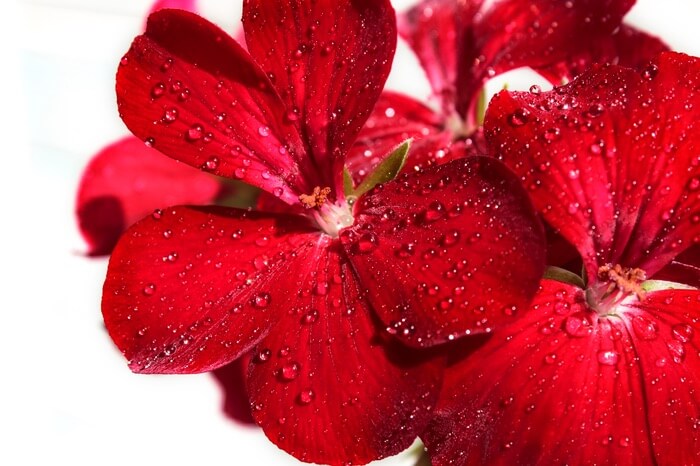
While red geraniums can fill your garden with the soft scent of flowery bliss, it’s another scent-producing plant that repels wasps. The smell is overpowering enough to throw off the insect’s ability to use scent detection to navigate your property.
Another perk is the lack of pollen. Many flowering plants will attract wasps rather than deter them. That’s not a concern with red geranium. It produces very little pollen, if any at all.
6. Citronella
Also known as the “mosquito plant,” citronella plants are a fantastic option for herb gardens and containers. It’s a leafy plant that produces thick and curly leaves. Fully-grown plants are abundant and fragrant, leaving a citrus-like smell to waft over your yard.
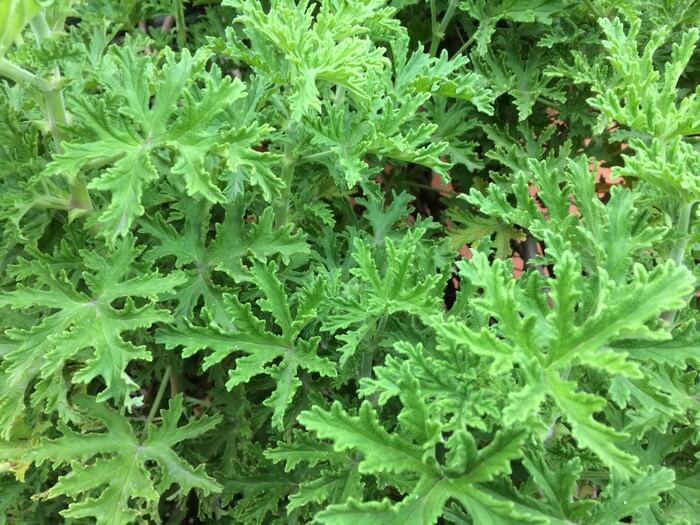
Like lemongrass, citronella produces citronella oil. It’s a sharp and somewhat acidic smell that most flying insects don’t like to be around. In addition to keeping wasps away, it’ll take care of mosquitos, bees, and more.
You can grow citronella plants anywhere that gets a full day of sun. Inside, they tend to stay small and manageable. But if you want the whole, fragrant experience, start a plant outside and let it flourish!
7. Cucumber
Believe it or not, cucumber plants are pretty effective at keeping wasps away. It’s not because of essential oils in the leaves or even an offensive smell. Its role as a wasp repellent plant comes down to the vegetable itself.
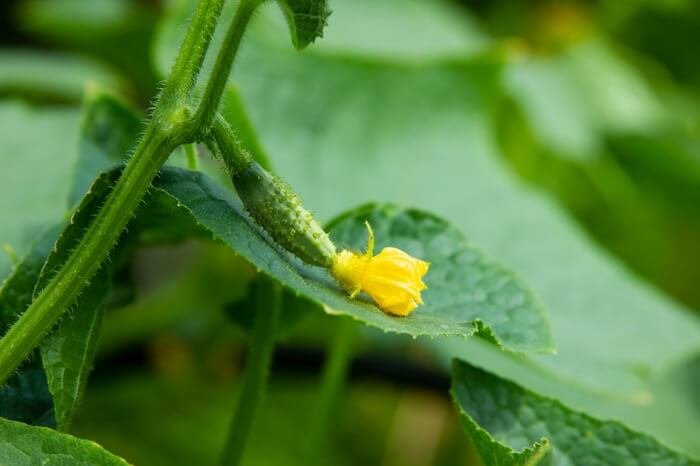
Cucumbers have thick peels filled with a bitter chemical called cucurbitacins. When insects feed on plant detritus and leaves, they almost always avoid cucumber peels. In fact, nearby vegetables often stop bugs from feeding on the plant altogether. It’ll also prevent them from laying eggs nearby!
For this reason, many gardeners swear by cucumber’s proficiency as a wasp repellent plany. If you cannot grow these plants directly, you can try spreading the peels in your garden as compost.
8. Pennyroyal
If you’ve ever smelled pennyroyal plants in person, you know how deceptively alluring it is. Like spearmint and peppermint, this plant produces a minty smell.
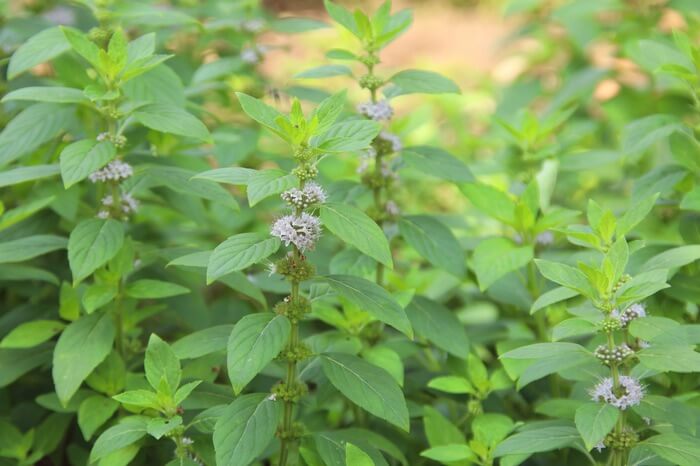
It’s something that wasps hate, so most will stay as far from these plants as possible.
While you might be tempted to use pennyroyal like other minty plants, this is a cultivar you should only use decoratively. The plant’s leaves and flowers contain a compound known as pulegone. It’s a poisonous substance that harms the liver, so pennyroyal is not safe for consumption.
However, it is a gorgeous ornamental plant to have. It grows large stalks filled with oval-shaped leaves and bushy purple flowers.
9. Marigold
Here’s a flower that’s both beautiful and easy to grow. You don’t need to have much of a green thumb to find success with Marigold. As long as you live in temperate conditions with plenty of sunlight, it’ll flourish!
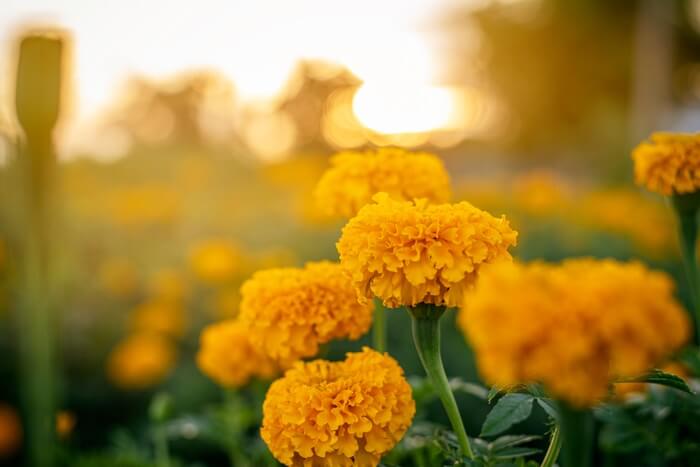
Marigold is a favorite among farmers and gardeners. The flowers and leaves have a smell that’s offensive to many flying insects. For this reason, you rarely see bugs around it.
The smell is so effective against pests that gardeners often use it to keep vegetables safe. Marigold effectively masks the scent of nearby fruits and vegetables, making it a powerful tool against nuisance bugs!
10. American Wintergreen
American wintergreen might seem like another minty variant to those who have never seen one in person. However, this plant is unique in its own right.
It produces thick, waxy leaves and vibrant red berries. American wintergreen grows in colder climates throughout the Northeast United States and Canada. It’s surprisingly hardy and serves as a great plant to repel wasps.
The main draw of this plant is the methyl salicylate. Methyl salicylate is a chemical compound that’s responsible for the minty smell, which wasps hate. This compound is so effective that you can often find it in commercial repellents and pesticides. It’s even used in over-the-counter medicines thanks to its soothing effect on muscle aches.
11. Thyme
Thyme is a popular culinary herb with a long history of medicinal years. For thousands of years, humans have used it to treat everything from fungal infections to heart health! While it’s predominantly used to spice up dishes these days, it’s also one of the best plants to repel wasps.
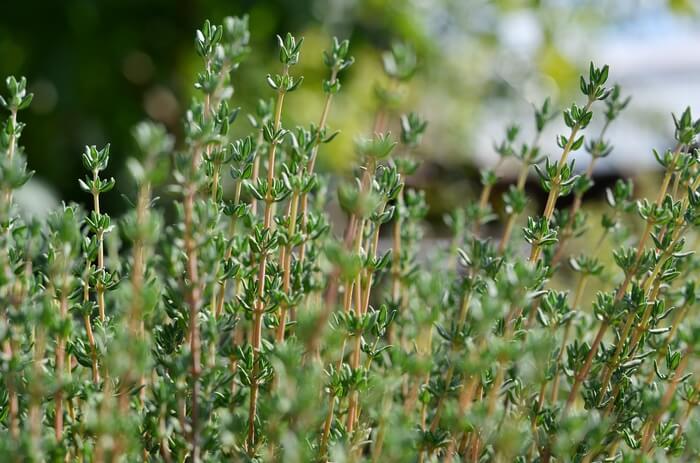
This aromatic herb has a sharp and robust smell. Curiously, the aroma becomes stronger when the plant is touched or bruised. It releases more of the essential oils from within, making it a hazardous plant that wasps will avoid.
Best of all, thyme is easy to grow. It’s undemanding and will become more resilient as it adapts to your environment.
12. Ginger Mint
Ginger mint is a favorite among culinary enthusiasts and cocktail-makers. As you would expect from any cultivar in the mint family, this plant gives off a crisp and cooling scent. The flavor is just as refreshing.
However, ginger mint has an added layer of spice. First off, the leaves feature highlights of gold, which creates an eye-catching look in your garden. Beyond that, the plant has a unique scent profile. In addition to the traditional menthol-like aroma, it has a hint of sinus-clearing heat.
As you can imagine, this is a plant that wasps hate. Minty smells alone are enough to keep them away. Adding a splash of spicy ginger to the mix makes it even worse for the pests!
13. Wormwood Herb
Wormwood herb is a unique plant that you don’t see very often in backyard herb gardens. It’s native to parts of Europe and Asia, growing in the form of a dry bush.
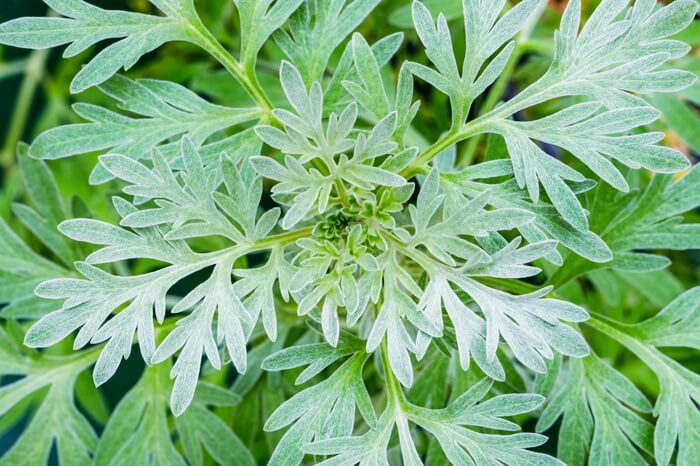
The leaves are silvery green while pale yellow flowers bloom in the spring.
The thing that makes the wormwood herb unique is its chemical composition. This plant contains absinthe, which is commonly used in spirits and herbal medicine. Wormwood has a long and somewhat sordid history because of its absinthe content.
When it comes to wasp repellent, the herb is very effective. That’s because absinthe is toxic to insects! The scent acts as a warning of danger to bees and wasps. In turn, these pests stay away at all costs.
14. Lemon Balm
Lemon balm is another widely praised wasp repellent plant that many gardeners love to grow. Not only is it incredible at keeping wasps away, but there are tons of different ways to use it. Pair with spearmint for cocktails, or add the leaves to some salad for a zesty flavor!
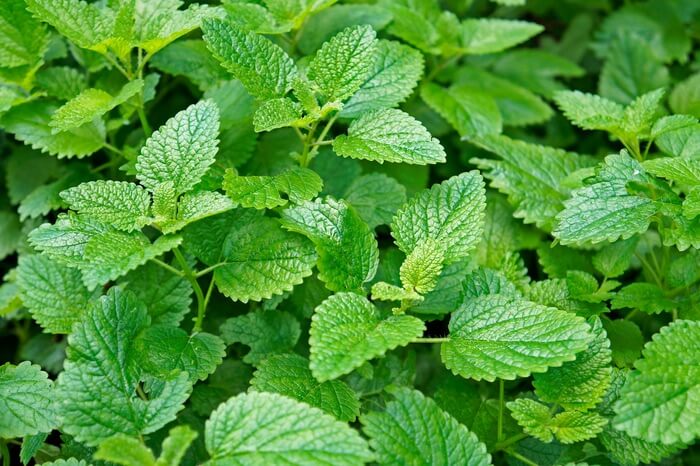
Like citronella and lemongrass, this plant produces a strong smell that wasps will avoid. More specifically, it contains citronellal. Citronellal is the main constituent of citronella oil and is mainly responsible for the intense fragrance.
Lemon balm is a sun-loving plant, so make sure to keep it out in the open! Once it starts growing, the plant is resilient and long-lasting.
15. Pitcher Plants
If you want a unique way of managing wasp issues, consider the pitcher plant. This species doesn’t necessarily repel wasps. In fact, it attracts them through its bright and pleasant flowers.
So how does it tackle wasp problems? Pitcher plants are carnivorous! Once a wasp lands on the wasp, the slippery surface forces the bug to fall into the container-like leaves.
The leaves are filled with water and have slippery sides that wasps can’t climb up. As a result, they drown! The plant then absorbs the insect for energy.
It’s a fascinating plant that can also take care of flies, crawling insects, and even small reptiles!
16. Ruta Graveolens
Commonly referred to as “rue,” the ruta graveolens plant is one of the best herbs for keeping wasps away. It’s a perennial plant that grows in dense bushes. Reaching heights of only two feet or so, these plants stay small. They’ll also develop bright yellow blooms.
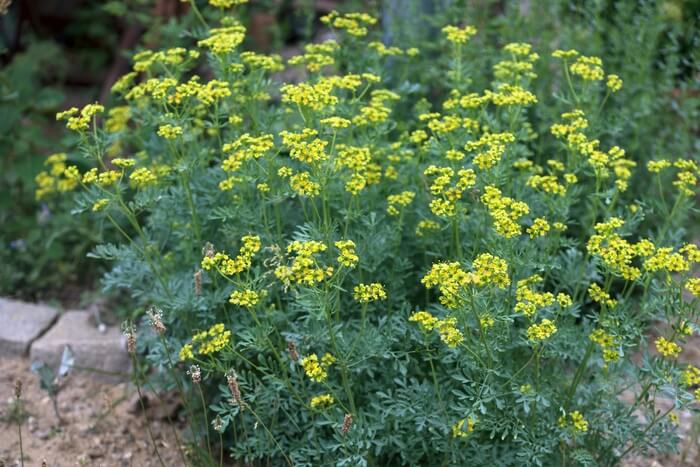
Oil glands cover the stems and leaves of ruta graveolens. They secrete oil that’s intense enough to turn even humans away. The intensity of the smell and how you respond to it will depend on your tolerance, but most gardeners describe the scent as musty.
Regardless of your tolerance, many wasps hate it. You can plant ruta graveolens on its own to keep wasps away. The leaves are great for creating homemade repellents, too.
17. Clove
Cloves are a common sight in kitchen pantries. Whether it’s whole or ground-up, the strong and spicy flavor can add a fantastic kick to dishes.
As you can imagine, clove plants also have a robust smell. The best way to describe the fragrance is sweet, warm, and woody. For many, it brings up memories of the holidays and flavorful desserts.
Technically speaking, cloves are flower buds. They grow in clusters on trees and are readily available throughout the year. This plant has an unmistakable scent that wasps hate. Even a single clove tree can provide enough coverage to make your property a wasp-free zone.
18. Sundews
Here’s another carnivorous plant worth checking out. Like the pitcher plant, it creates a fatal attraction for wasps. These bugs will gravitate towards the plant only to succumb to a pretty nasty death.
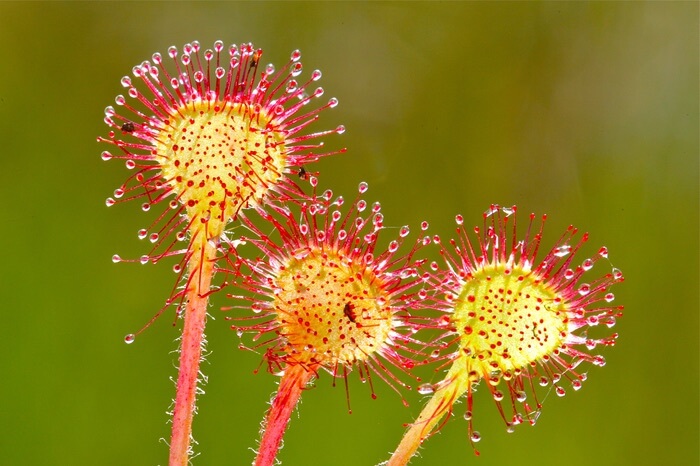
Sundews work a little differently than pitcher plants. Instead of drowning the wasp, these plants trap them in a sticky mess. The leaves are covered in sticky digestive juices.
Once wasps land on it, the leaves curl up as the digestive enzymes kill and process the bug. It all happens out in the open, so you can watch the destructive forces in action. Just be careful not to touch the plant yourself!
19. Venus Flytraps
Is there a more iconic carnivorous plant than the Venus flytrap? This plant is one of the most fascinating to watch, as you can see it move to trap wasps directly.
The leaves have a clamshell shape. Typically, they’re wide open and brightly colored to attract wasps. Little do these pests know that the leaves also have several trigger hairs.
When the wasp touches the hairs in quick succession, the leaves quickly snap shut and prevent the bug from escaping. When that happens, the plant’s digestive juices get to work killing and absorbing the bug. In several days, the leaves open again as they wait for the next victim.
20. Evergreens
Evergreen plants are varieties that retain their green coloration throughout the year regardless of weather changes. Because they look healthy all year long, you often see them in landscaping. Larger cultivars look great for privacy hedges, while shorter ones work well as perimeter fencing.
Either way, evergreens are great for keeping wasps out. Many cultivars have oil-producing leaves. For example, several popular herbs are evergreen. Rosemary, thyme, sage, and more fall into the evergreen umbrella.
The essential oils produce a pleasant smell that reminds many of cozy winters. However, the fragrance is downright offensive for wasps, bees, and other flying insects. Intensity can vary pretty wildly from one species to the next, so it pays to experiment until you find one that does the best job deterring wasps.
21. Eucalyptus
Last but not least, we have eucalyptus. Eucalyptus is a fast-growing evergreen tree with large leaves. Like other wasp repellant plants we’ve discussed, this one has a long history of medicinal use.
But it’s not just old wives’ tales. Eucalyptus oil is an officially registered insecticide in the United States. The oil that comes from this plant is minty and almost medicinal by nature.
As you can imagine, wasps hate the stuff. The oil’s potent nature messes with the bug’s sense of smell, making it challenging to navigate its surroundings. It essentially masks other odors and disguises things they like.
Most wasps will steer clear of any eucalyptus, so having a few plants around your yard can make a world of difference.
Conclusion
Now that you’re familiar with all of the best wasp repellent plants, you just have to pick the ones that work for you. Simply factor in your yard, garden, and personal preference before making a choice.
And remember, you can always plant a handful of different kinds!
Let us know if you have any questions about using these plants to repel wasps. We love utilizing eco-friendly forms of pest control.
